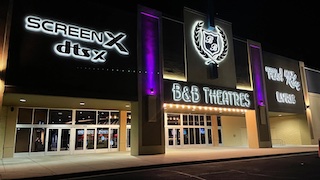 In the late 1990s, a relatively small group of men and women, mainly in Hollywood, had the radical idea of reinventing the motion picture business, a business that had been working successfully for more than one hundred years. Twenty years ago this month, Digital Cinema Report began reporting on that effort and chronicled one of the most amazing transitions in history. The changes did not happen easily or quickly and there were many people opposed to the very idea. But there’s no need here to rehash every battle; this is not a history. Rather, this is what five motion picture industry leaders and I think were the top twenty most significant developments in making that change a reality. For weeks we asked readers to tell us what they thought belonged on the list, and from that list we chose the final twenty. In addition to me, the judges, in alphabetical order were Tom Bert, director of cinema technology, Barco; Brock Bagby, executive vice president, chief content and development officer, B&B Theatres; Cedric Lejeune, vice president of technology, EclairColor; Loren Nielsen, vice president, content and strategy, Xperi Corporation; and Leon Silverman, advisor, 2030 Vision, strategy and industry relations, MovieLabs. Here then is Digital Cinema Report’s Twenty-Twenty.
In the late 1990s, a relatively small group of men and women, mainly in Hollywood, had the radical idea of reinventing the motion picture business, a business that had been working successfully for more than one hundred years. Twenty years ago this month, Digital Cinema Report began reporting on that effort and chronicled one of the most amazing transitions in history. The changes did not happen easily or quickly and there were many people opposed to the very idea. But there’s no need here to rehash every battle; this is not a history. Rather, this is what five motion picture industry leaders and I think were the top twenty most significant developments in making that change a reality. For weeks we asked readers to tell us what they thought belonged on the list, and from that list we chose the final twenty. In addition to me, the judges, in alphabetical order were Tom Bert, director of cinema technology, Barco; Brock Bagby, executive vice president, chief content and development officer, B&B Theatres; Cedric Lejeune, vice president of technology, EclairColor; Loren Nielsen, vice president, content and strategy, Xperi Corporation; and Leon Silverman, advisor, 2030 Vision, strategy and industry relations, MovieLabs. Here then is Digital Cinema Report’s Twenty-Twenty.
The DLP Chip
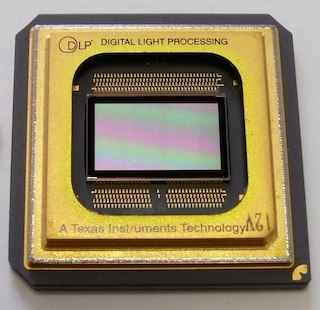 Texas Instruments had developed its Digital Light Processing chip in the late 1990s and was an early believer in the promise of digital cinema. As judge Loren Nielsen put it, “The DLP chip, light engine and color calibration software developed by TI were essential to the development of digital cinema. This elegant technology delivers high quality cinematic images, is reliable, durable, and flexible. The DLP chip as the core imaging device, can be used for 3D, to show 2K or 4K resolution, operate at a variety of frame rates, work with an array of different lenses, deliver a desirable color space (P3 & Rec2020), paired with different light sources including xenon, laser, and laser phosphor, and be engineered with a second DMD for dual imaging to create Dolby Cinema. DLP Cinema chips are now deployed in over 90 percent of cinemas worldwide.”
Texas Instruments had developed its Digital Light Processing chip in the late 1990s and was an early believer in the promise of digital cinema. As judge Loren Nielsen put it, “The DLP chip, light engine and color calibration software developed by TI were essential to the development of digital cinema. This elegant technology delivers high quality cinematic images, is reliable, durable, and flexible. The DLP chip as the core imaging device, can be used for 3D, to show 2K or 4K resolution, operate at a variety of frame rates, work with an array of different lenses, deliver a desirable color space (P3 & Rec2020), paired with different light sources including xenon, laser, and laser phosphor, and be engineered with a second DMD for dual imaging to create Dolby Cinema. DLP Cinema chips are now deployed in over 90 percent of cinemas worldwide.”
The DC28 Specification
SMPTE’s DC28 Technology Committee held its first meeting in January 2000. Its eight sub-committees addressed topics from mastering and compression to audio and projection. Faced with what was a daunting and enormous task, the committee understood its limitations. As one committee member wrote at the time: “For the purpose of simplifying a still very complicated task, DC28 focuses on standards and practices for digital cinema distribution and exhibition. That is, production and post-production are not included. What remains is still the Himalayas, even though Mount Everest may not be included. The input to the digital cinema system, from post-production, is a set of master signals in digital form, video, audio, and associated and accompanying data. The output of the system, at the movie theatre, is the presentation to the consumer.” The DC28 specs provided a framework that enabled digital cinema to grow.
Digital Cinema Initiative
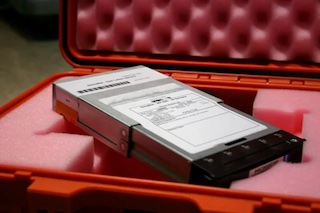 The Digital Cinema Initiative was something of a miracle but was necessary. The Hollywood studios were not well known for liking one another but they all recognized that some official, and at least theoretically independent body was needed to address the chaos that was the early days of digital cinema. Formed in March 2002, in a ground-breaking effort, all six (at the time) major studios worked together, partnering with technology companies and experts to establish specifications for digital cinema delivery, presentation and security. The first DCI spec, released in 2005 provided peace of mind to manufacturers, exhibitors, and distributors that they could safely develop, buy technology, package, and deliver films securely and that format wars would not take place.
The Digital Cinema Initiative was something of a miracle but was necessary. The Hollywood studios were not well known for liking one another but they all recognized that some official, and at least theoretically independent body was needed to address the chaos that was the early days of digital cinema. Formed in March 2002, in a ground-breaking effort, all six (at the time) major studios worked together, partnering with technology companies and experts to establish specifications for digital cinema delivery, presentation and security. The first DCI spec, released in 2005 provided peace of mind to manufacturers, exhibitors, and distributors that they could safely develop, buy technology, package, and deliver films securely and that format wars would not take place.
ASC Motion Imaging Technology Council
There are a few people who are still angry that the much-respected American Society of Cinematographers put up roadblocks in the early days of digital cinema. But the ASC and its members were not willing to settle for good enough. I recall having many conversations with a top ASC official at the time and making the case that film projectors across the country were literally destroying the life’s work of every working feature film cinematographer. His answer was that ASC members would only settle for digital cinema that could deliver images comparable to or better than an answer print. The industry at large and especially moviegoers around the world should be grateful that they succeeded.
Digital Cinema Packages
 Three technologies that were developed early in the transition were critical to its implementation and ongoing success. They are digital cinema packages, the integrated media block and theatre management systems. The studios’ main goal in implementing digital cinema was to save money. They were spending hundreds of millions of dollars each year making bulky, heavy 35mm prints and shipping them around the world and wanted that to stop. The digital cinema package was the initial solution and today DCPs are the staple of the motion picture industry.
Three technologies that were developed early in the transition were critical to its implementation and ongoing success. They are digital cinema packages, the integrated media block and theatre management systems. The studios’ main goal in implementing digital cinema was to save money. They were spending hundreds of millions of dollars each year making bulky, heavy 35mm prints and shipping them around the world and wanted that to stop. The digital cinema package was the initial solution and today DCPs are the staple of the motion picture industry.
Integrated Media Block
A component of the digital cinema projection system, the integrated media block converts the DCP’s content into data that ultimately produces picture and sound in compliance with DCI’s anti-piracy encryption requirements. They are indispensable in the operation of any theatre using digital projection, which is, effectively, every movie theatre in the world.
Theatre Management Systems
 Once cinema projectors were digital, software was needed to manage all the technology needed to operate it and all the other digital systens in a multiplex. Several companies responded with theatre management systems that, today, despite their sophistication, can be operated from a laptop.
Once cinema projectors were digital, software was needed to manage all the technology needed to operate it and all the other digital systens in a multiplex. Several companies responded with theatre management systems that, today, despite their sophistication, can be operated from a laptop.
Virtual Print Fees
By the mid-2000s, much if not most of the technology needed for digital cinema exhibition was in place. But most theatre owners were slow to embrace it. The cost to make the transition was high and early on exhibitors believed the studios were going to be reaping all the savings. The virtual print fee, which was the result of much hard lobbying by the National Association of Theatre Owners was a critical business innovation that helped balance the cost of digital cinema equipment installation in cinemas and the relatively inexpensive new delivery format, the DCP. The VPF provided a mechanism by which distributors would reimburse exhibitors on a digital title by digital title basis. Third party companies were willing to take the capital risk of purchasing expensive digital cinema equipment with the assurance of an ongoing cash stream courtesy of virtual print fees, monetized with capital leases to exhibitors over the course of 8-10 years. Most of the original VPF deals are now complete.
Digital Stereoscopic 3D
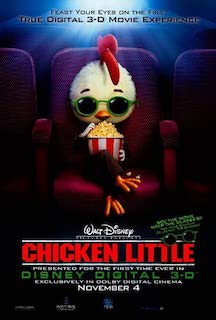 One of the technologies that has always enabled cinema to remain superior to television is stereoscopic 3D. To the studios, once projectors became digital, the promise of 3D seemed like a goldmine and for a short time it was. Steve Schklair’s now defunct company 3ality worked on some of the biggest 3D films of the 2000s. (My personal favorite was the concert film U23D.) Schklair pointed out to me that the movie business comprises three key groups: creatives, engineers, and the Hollywood studios. Typically, an engineer or a creative has an idea and tries to get the funding to go ahead. As he noted, 3D was the first, and perhaps the last, time in history that the studios were the ones behind the push to make it happen. And they did and 3D took off. Then came 2D-3D conversion. Few, if anyone, would argue that movies that originate in 3D are technically superior to those that use conversion. But conversion is much less expensive than shooting 3D and suddenly the studios were no longer willing to spend the extra money. Conversion does have benefits. It provides more tools for the fine-tuning of depth placement for creative and technical purposes. And it is useful with the thousands of visual effects shots that are combined with in-camera capture. But it put Schklair and many other companies out of business and effectively killed quality 3D filmmaking.
One of the technologies that has always enabled cinema to remain superior to television is stereoscopic 3D. To the studios, once projectors became digital, the promise of 3D seemed like a goldmine and for a short time it was. Steve Schklair’s now defunct company 3ality worked on some of the biggest 3D films of the 2000s. (My personal favorite was the concert film U23D.) Schklair pointed out to me that the movie business comprises three key groups: creatives, engineers, and the Hollywood studios. Typically, an engineer or a creative has an idea and tries to get the funding to go ahead. As he noted, 3D was the first, and perhaps the last, time in history that the studios were the ones behind the push to make it happen. And they did and 3D took off. Then came 2D-3D conversion. Few, if anyone, would argue that movies that originate in 3D are technically superior to those that use conversion. But conversion is much less expensive than shooting 3D and suddenly the studios were no longer willing to spend the extra money. Conversion does have benefits. It provides more tools for the fine-tuning of depth placement for creative and technical purposes. And it is useful with the thousands of visual effects shots that are combined with in-camera capture. But it put Schklair and many other companies out of business and effectively killed quality 3D filmmaking.
Avatar
![]() James Cameron is one of the few exceptions to that 3D rule. There is no question in my mind that the original Avatar, which was released in 2009, jump-started the digital cinema transition by many years. Disney’s Chicken Little, released in 2005, deserves its share of credit, too. That earlier film was a critical flop. But, for the roughly one-hundred theatres in the States that could show it in 3D, it was a spectacular financial success. It proved the 3D business model. Typically, theatres charged three times the normal ticket price to see Chicken Little in 3D. One Iowa theatre charged six-times its regular price and still attracted huge audiences. Exhibitors now believed in the concept and were ready to adopt digital. The initial problem was a lack of good 3D content. Then came Avatar. It’s difficult to convey the excitement that was generated at ShowWest (now CijnemaCon) in early 2009 when about fifteen minutes or so of Avatar was shown to the exhibitors gathered there. Cameron’s film convinced them to quickly install thousands of digital cinema systems with 3D capability in time to present Avatar to their patrons. Avatar pushed digital cinema into the mainstream of exhibition. It will be very interesting to see what the results of Avatar: The Way of Water will be.
James Cameron is one of the few exceptions to that 3D rule. There is no question in my mind that the original Avatar, which was released in 2009, jump-started the digital cinema transition by many years. Disney’s Chicken Little, released in 2005, deserves its share of credit, too. That earlier film was a critical flop. But, for the roughly one-hundred theatres in the States that could show it in 3D, it was a spectacular financial success. It proved the 3D business model. Typically, theatres charged three times the normal ticket price to see Chicken Little in 3D. One Iowa theatre charged six-times its regular price and still attracted huge audiences. Exhibitors now believed in the concept and were ready to adopt digital. The initial problem was a lack of good 3D content. Then came Avatar. It’s difficult to convey the excitement that was generated at ShowWest (now CijnemaCon) in early 2009 when about fifteen minutes or so of Avatar was shown to the exhibitors gathered there. Cameron’s film convinced them to quickly install thousands of digital cinema systems with 3D capability in time to present Avatar to their patrons. Avatar pushed digital cinema into the mainstream of exhibition. It will be very interesting to see what the results of Avatar: The Way of Water will be.
Immersive Audio
The benefits of digital cinema also included much better movie theatre sound. Filmmakers love the story-telling possibilities that quality audio provides, and audiences can hear the difference. One exhibitor in Brazil told me that he saw a definite uptick in attendance after he installed immersive audio in his auditoriums. He, apparently, is not an exception. It’s all but impossible to find a premium large format theatre that doesn’t incorporate immersive audio.
Premium Large Format
There have always been very large theatres but with digital cinema came the advent of premium large format theatres. Virtually every major exhibitor in the world has its own version and has at least one PLF screen. They feature huge, often floor-to-ceiling screens, laser projection, immersive audio and last, but not least high-quality seats. One of the best examples of this is Dolby Cinema. Each theatre is custom designed by the same award-winning people who designed the Apple stores. The theatres feature proprietary DLP projection technology called Dolby Vision that produce a powerful high dynamic range and wide color gamut image. This is combined with Dolby Atmos immersive sound and some of the most comfortable seats in the industry.
High Dynamic Range
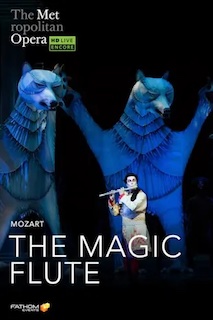 The development of high dynamic range images in the mid-2000s is the most exciting thing to happen to picture quality in the last twenty years. SMPTE standard 2084, established the perceptual quantizer transfer function enabling HDR mastering for cinema and downstream. The technology enables filmmakers to create images with true blacks that at the same time are also brighter and crisper. Perhaps the best example of it is Dolby Cinema, which boasts astonishing contrast ratios.
The development of high dynamic range images in the mid-2000s is the most exciting thing to happen to picture quality in the last twenty years. SMPTE standard 2084, established the perceptual quantizer transfer function enabling HDR mastering for cinema and downstream. The technology enables filmmakers to create images with true blacks that at the same time are also brighter and crisper. Perhaps the best example of it is Dolby Cinema, which boasts astonishing contrast ratios.
Event Cinema
There is a special place in my heart for event cinema; it is the reason I started Digital Cinema Report. While I believed then and now that feature films will always be the centerpiece of movie theatres, I reasoned twenty years ago that digital cinema technology would enable theatres to play a diverse range of content. In the early 2000s, most people disagreed. Hollywood and even many exhibitors were openly derisive; they called it ODS, or Other Digital Shit. But a growing number of exhibitors began to experiment with the idea. In one of the first, and most lasting examples, Regal Cinema worked with New York’s Metropolitan Opera to present live performances in theatres across the country. (The opera is now distributed by Fathom Events.) Instead of having to travel hundreds of miles and spend hundreds of dollars or more to see an opera, fans can see a performance in their local cinema for twenty dollars or so. Sports also proved to be very popular. One early success story was Showcase Cinema and the Boston Red Sox. As one of the first patrons to see a game in a movie theatre noted, the ticket cost him much less than going to the game in person, parking was free, and the beer cost about half what it would at the ballpark. It was a win-win for everyone and continues to this day. Today, there are a growing number of examples and I believe event cinema has still not reached its full potential.
Dynamic Seating
Exhibitors have always faced the challenge of giving people an experience they can’t duplicate at home and dynamic seating is one good example of that. Thanks to digital cinema technology several manufactures produce seats that provide motion and other effects that are keyed to the action on the screen. The seats move in many directions, spray patrons with water, deliver smoke and aromas, and offer a range of other possibilities. Dynamic seats are ideal for action films and, especially, for horror films.
ScreenX
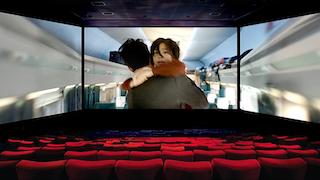 I confess, I fell in love with the ScreenX format from the Korean company CJ 4DPlex the moment I saw it. For anyone old enough to remember, it was like being back in a Cinerama theatre and being fully enveloped in the images on the screen. The ScreenX technology has three screens: the main screen and a smaller screen on either side that wrap the viewer in a 270-degree image. The footage that ScreenX creates for those side screens keeps getting longer and more effective and more movies are being released in the format every year.
I confess, I fell in love with the ScreenX format from the Korean company CJ 4DPlex the moment I saw it. For anyone old enough to remember, it was like being back in a Cinerama theatre and being fully enveloped in the images on the screen. The ScreenX technology has three screens: the main screen and a smaller screen on either side that wrap the viewer in a 270-degree image. The footage that ScreenX creates for those side screens keeps getting longer and more effective and more movies are being released in the format every year.
Laser Projection
Given all the advantages of laser projection over the xenon projectors that were the early staple of digital cinema, it’s difficult to believe how long it took to get government approval of the technology. Much of the credit for that belongs to the Laser Illuminated Projecter Association and one of its staunchest advocates, Bill Beck. Despite all the evidence to the contrary, the government deemed laser light unfit for public uses and banned it. Beck and the association spent months and months lobbying to change that position and finally won. Today, laser projection in all its forms is steadily replacing xenon in movie theatres. Laser projection delivers brighter images, with higher contrast and reduced operating costs. They are also cooler and better for the environment.
Recliner Seating
Exhibitors began installing recliners in their theatres around 2013, often combining the comfort and luxury of a recliner with reserved seating. This innovation in cinema meant 50-70 percent fewer seats in auditoriums but that is often offset with premium pricing. Recliners are another important component in premium cinema, frequently combined with laser projection, immersive sound, and specialized lighting for a full concept. Exhibitors often cite recliner seating as one of their most profitable investments.
LED Cinema Screens
DCI-Certified LED Cinema Screens were introduced before the pandemic began and, despite their still high cost, were beginning to gain traction in theatres around the world. The image quality was high and offered several advantages. The screens were cooler to operate than projectors and eliminated the need for a projection booth, which enabled exhibitors to replace some of the recliner seats they sacrificed for projectors. There are now several manufacturers entering that market, which should begin to bring prices down.
Online Ticket Sales
Selling tickets online benefits the moviegoer and exhibitor. It can cut down on the time a moviegoer has to stand in line. And it streamlines the ticket-taking process, which enables cinema staff to devote more time and energy to customer service. Online ticket sales are here to stay.
Honorable Mention
Making lists is always arbitrary and the results are never perfect. Several judges would have included different technologies and it’s only fitting that those things be mentioned here as well. They are:
Satellite Distribution
Digital Intermediates
Streaming
Virtual Production
The Global Fiberoptic Network
Cloud Technology
